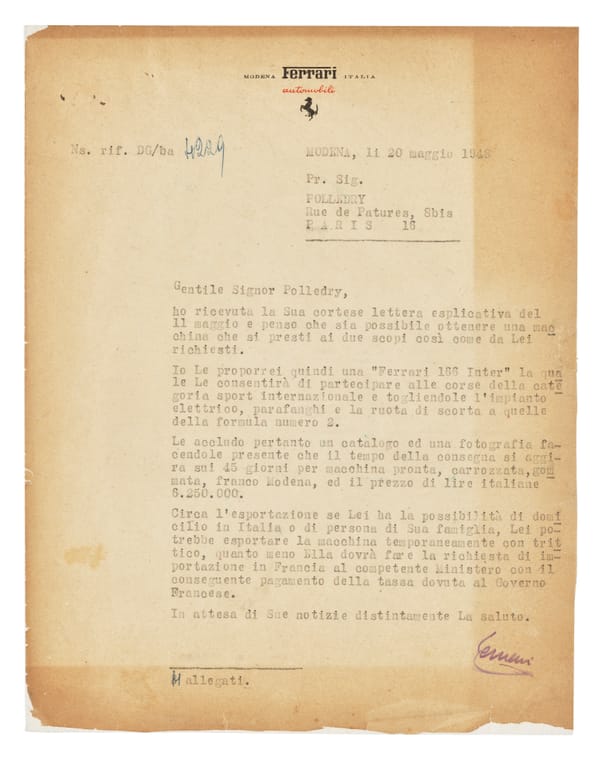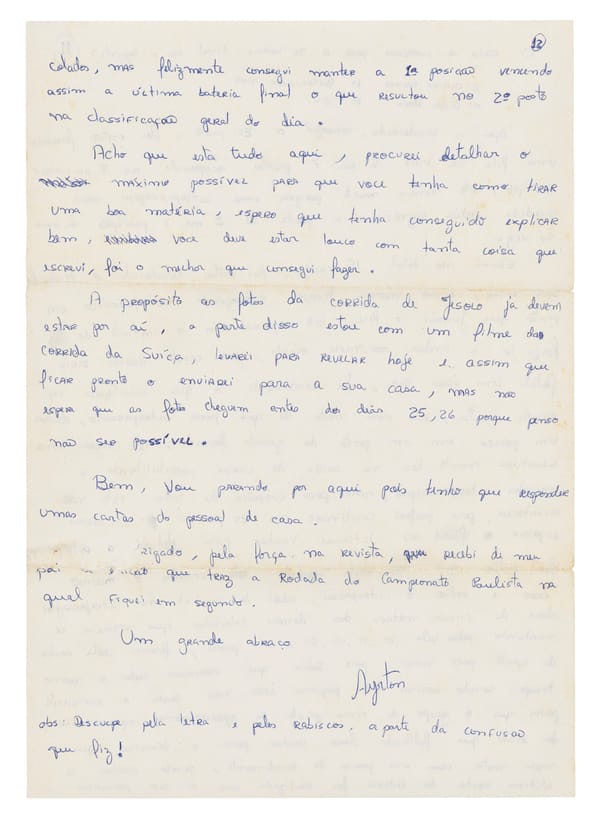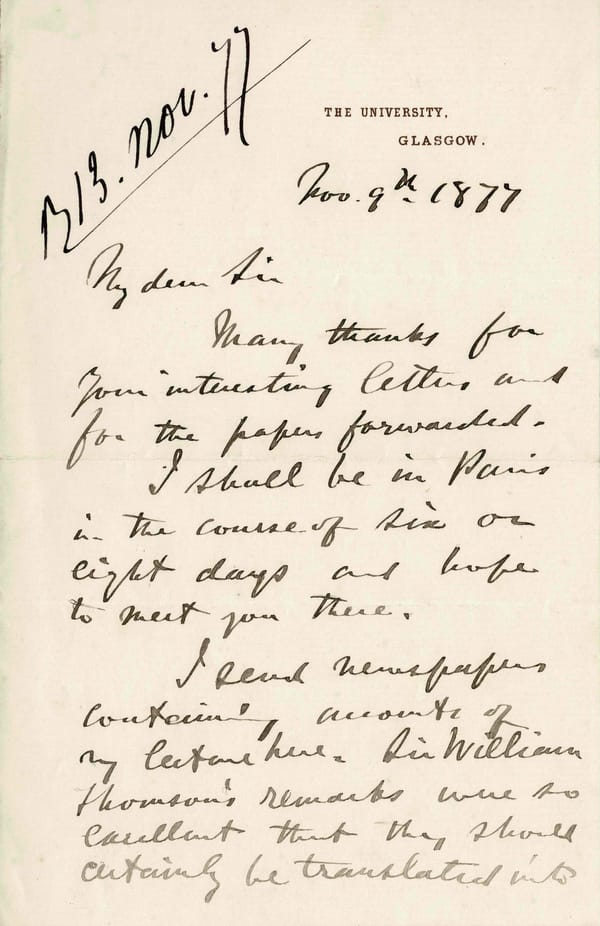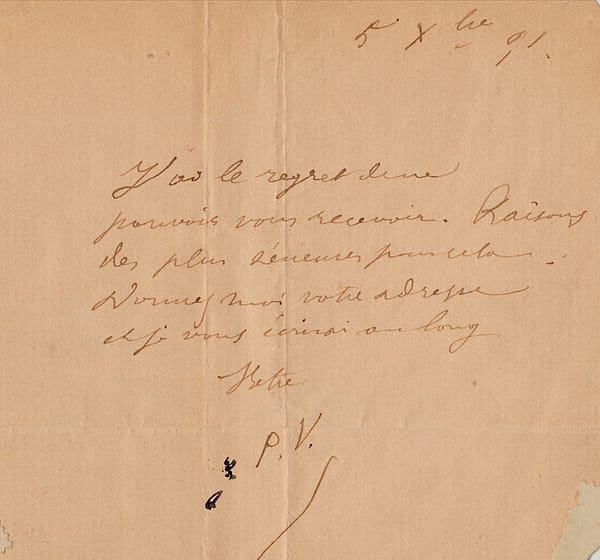Vinton Cerf draws his role in creating the Internet
Hand-drawn by Vinton Cerf in the 1990s, this sketch revisits his groundbreaking 1977 concept of the TCP/IP protocol, the foundation of the Internet. It illustrates how different networks - ARPANET, SATNET, PRNET - could communicate through a universal architecture.
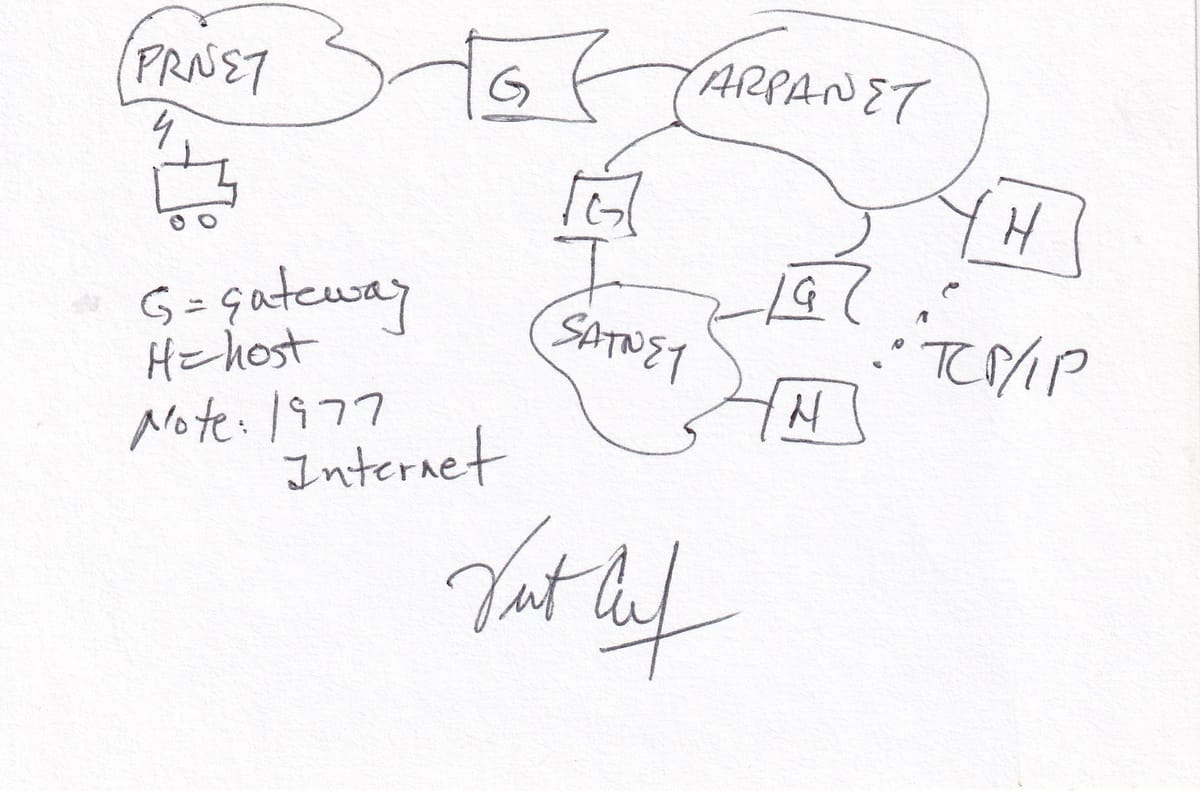
On a small sheet of paper, just 7 cm by 12, three names appear: ARPANET, SATNET, PRNET. They're connected by a few black lines, drawn by hand. It’s an original drawing by Vinton Cerf, made in the 1990s, but capturing an idea that dates back to 1977. In a single page, it outlines the architecture of a global network, a vision that would give birth to the Internet as we know it.
Cerf, together with Robert Kahn, was trying to solve a deceptively simple but technically huge problem: how to make computers from different networks communicate. Their answer was the TCP/IP protocol - a common language for machines - officially adopted in 1983. Without it, interconnection between networks wouldn’t exist. This sketch captures the turning point: from isolated systems to the Internet, from local to global.
What strikes me most is how recent this all is. I myself only got access to the Internet when I entered university, in the 1990s. In a single generation, it went from a tool for researchers to a global infrastructure. First came email, then Tim Berners-Lee’s Web, followed by search engines, social media, mobile access… Today, we talk about AI, the metaverse, an even more immersive future. But it all started here, with this simple and visionary drawing by Vinton Cerf.
Are you a publisher, a museum, a dealer, an auction house, or a private collector with a document you believe to be important? Write to us and send it in — we’ll analyze it and get back to you promptly: info@historyonpapers.com

